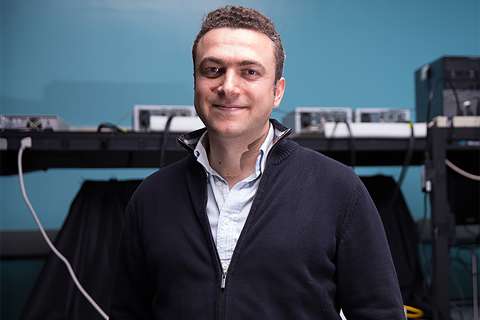Inflammatory breast cancer (IBC) is a lesser-known disease that accounts for 1% to 5% of breast cancer diagnoses, and 10% of breast cancer deaths in the U.S. It gets its name because of the red, swollen look the breast develops, despite no injury or infection.
What is inflammatory breast cancer?
IBC is a type of breast cancer that starts in the milk ducts then spreads beyond their walls (invasive ductal carcinoma). There is often no lump or tumor; instead the cancer cells block the lymph vessels in the skin, which results in the breast looking inflamed.
The lack of lumps or tumors can make IBC harder to diagnose than other types of breast cancers, in that it might not be as evident on a mammogram.
IBC also grows and spreads much more quickly than the more common breast cancer types. By the time IBC is diagnosed, the cancer is usually at least stage III with the cells having grown into the skin. There’s also a one-in-three chance it has spread to other parts of the body (stage IV) at the time of diagnosis, making it harder to treat.
Who is at risk for inflammatory breast cancer?
IBC tends to occur more frequently in women who are:
- African American
- Overweight or obese
- Postmenopausal
- Young mothers
- Younger than age 40
IBC signs and symptoms
Typically, breast cancer symptoms develop slowly over time. With inflammatory breast cancer, however, symptoms progress quickly over days or weeks. Women often report receiving an inaccurate diagnosis of mastitis or breast infection because the symptoms are similar:
- Changed breast appearance, including darkened skin coloring, dimpling, ridges or thickening of the skin
- Flattened or inverted nipple
- Itching, tenderness or pain
- Redness covering more than one-third of the breast
- Swelling of lymph nodes near the neck or under the arm
- Swelling that affects one breast, causing it to be larger than the other
- Warm or hot skin
If you experience these symptoms and receive an antibiotic treatment for infection, but your symptoms don’t resolve within a week, it’s important to follow up with your provider.
Diagnosing inflammatory breast cancer
Because mammograms are often ineffective at identifying IBC, your provider may use other imaging tests such as breast ultrasound or breast MRI. A breast biopsy is often used to confirm the presence of cancer cells.
A small piece of tissue will be removed from the breast and tested to determine:
- How advanced the cancer is
- Whether the cells are vulnerable to hormone therapy
- The grade of the tumor (how quickly it is likely to grow and spread)
To determine if the cancer has spread far beyond the breast — stage IV — your physician may also need to take a sample of a lymph node or use tests such as:
- Positron emission tomography scan (PET scan)
- CT scan of the chest
- Bone scan
IBC treatment
Chemotherapy is the first line of treatment for IBC that has not spread beyond the breast. Following chemotherapy, you may undergo surgery to remove the cancerous tissue and radiation to kill any remaining cancer cells. Depending on the makeup of the cancer cells, your physician may also recommend:
- Targeted therapy that detects and blocks the proteins in or on cancer cells that help them grow. Learn more about targeted therapy for breast cancer.
- Hormone therapy to decrease the likelihood of the cancer returning. Learn more about hormone therapy for cancer.
If the cancer has spread (metastasized) beyond the breast, your physician may recommend drug therapies in addition to chemotherapy to slow the spread and growth. Immunotherapy — which bolsters your body’s ability to track down and destroy cancer cells — may be another treatment option when cancer spreads to other parts of the body.
Depending on where you receive care, you may be eligible for a clinical trial. These are research studies that explore advanced treatments not yet available to the general public.
If you have signs of a breast infection or mastitis, contact your primary care provider. The UCLA Breast Program offers screening, diagnosis and treatment for breast cancer in men and women.



